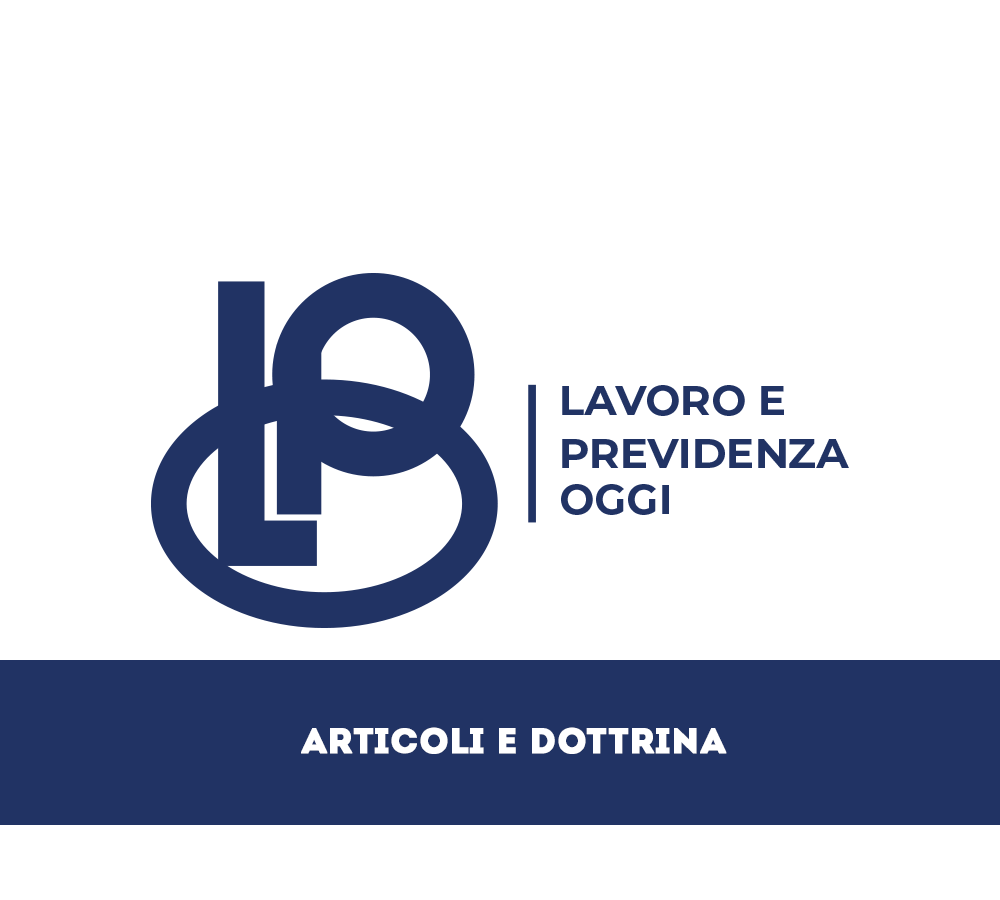L’ art. 13 dello Statuto dei lavoratori e la mobilità orizzontale

Di Maria Lavinia Buconi
Abstract
L’art.13 dello Statuto dei Lavoratori, stabilendo che il prestatore di lavoro deve essere adibito alle mansioni per le quali è stato assunto o a quelle corrispondenti alla categoria superiore che abbia successivamente acquisito ovvero a mansioni equivalenti alle ultime svolte, ha integralmente riscritto l’art. 2103 c.c.; tali modifiche hanno radicalmente innovato il nostro ordinamento giuslavoristico, trasformando l’art. 2103 c.c. in una speciale norma di protezione della professionalità del lavoratore, quale espressione dei principi di cui agli artt. 2, 4 e 35 Cost.. L’art. 2103 c.c. è stato nuovamente modificato dall’art.3 del D. Lgs. n.81/2015, il quale ha sostituito la categoria dell’equivalenza delle mansioni con quella della riconducibilità allo stesso livello e categoria legale delle ultime mansioni svolte. Il presente contributo si propone di esaminare sinteticamente le principali questioni affrontate dalla dottrina e dalla giurisprudenza in ordine alla mobilità orizzontale nel passaggio dall’art.13 dello Statuto dei Lavoratori all’attuale testo dell’art.2103 c.c..
Abstract
Article 13 of the Workers’ Statute, providing that the employee must be assigned the duties which he was hired for, or those corresponding to the higher category he has subsequently acquired, or duties equivalent to the last ones performed, has fully changed the former art.2103 of the Italian Civil Code; this change has radically innovated our labor law system, transforming art. 2103 of the Italian Civil Code in a special rule for the protection of the professionalism of the worker, which is expression of the principles referred to in Articles 2, 4 and 35 of the Constitution. Art. 2103 of the Italian Civil Code was again amended by Article 3 of Legislative Decree no. 81/2015, which replaced the concept of equivalence of duties with that of the attributability to the same level and legal category which the last ones performed refer to. This essay aims at briefly examining the main issues debated by doctrine and jurisprudence in relation to the horizontal mobility, in the transition from Article 13 of the Workers’ Statute to the current provision under Article 2103 of the Italian Civil Code.

